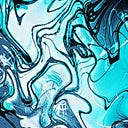Building a Supervised Learning Application in R
From Development to Deployment
Data science is constantly evolving, and building strong supervised learning applications is key for making informed decisions in many industries. This guide walks you through how to build, test, and deploy an application using R, RStudio, Docker, and important R packages.
Development Environment and Tools
Before starting, here’s what you’ll need:
- RStudio: An IDE for R, perfect for coding, debugging, and visualization.
- R: The programming language that shines in statistical computing.
Key Packages for Supervised Learning:
caret: A go-to package for training and fine-tuning models across various algorithms.ranger: A faster version ofrandomForestfor using the Random Forest algorithm.e1071: Includes SVMs and other statistical tools for classification and regression.torchorkeras: Better choices thanneuralnetfor deep learning.xgboost: A top-performing implementation of gradient boosting for structured data.tidymodels: A modern machine learning workflow with packages likeparsnip,recipes,tune, andyardstick.dplyr,tidyr: Essential for cleaning and organizing data.data.table: An efficient package for handling large datasets.readr: Speeds up data import.ggplot2: For creating beautiful, informative visualizations.plotly: Makes your visualizations and Shiny apps more interactive.
To manage your packages, use:
renv: Keeps your package versions consistent and reproducible.
Containerization with Docker
To make sure your app works the same everywhere, use Docker:
Optimized Dockerfile:
FROM rocker/tidyverse:latest
RUN R -e "install.packages(c('caret', 'ranger', 'e1071', 'torch', 'keras', 'xgboost', 'tidymodels', 'dplyr', 'tidyr', 'data.table', 'readr', 'ggplot2', 'plotly', 'renv'), repos='http://cran.rstudio.com/')"
COPY . /app
WORKDIR /app
CMD ["R", "-e", "shiny::runApp('app.R', host='0.0.0.0', port=3838)"]Testing Your Application
Testing helps ensure everything works smoothly:
- Unit Testing: Use
testthatto check individual functions and modules. - Integration Testing: Use
shinytest2for automated testing of the UI. - Model Testing:
- Use
caretandtidymodelsfor cross-validation. - Evaluate models with
yardstickandMLmetrics. - Plumber API Testing: Test API endpoints with
httror tools like Postman. - Benchmarking: Use
microbenchmarkorbenchfor performance testing. - Code Validation: Run
R CMD checkto ensure everything is working correctly.
Packaging and Deployment
Once the app is tested and ready, it’s time to package and deploy:
Packaging:
- Use
devtools::build()to create a.tar.gzpackage for easy distribution.
Deployment Options:
- Shiny Applications:
- Deploy to
Shinyapps.iofor small projects. - Use
ShinyProxyfor enterprise-level deployment. - Host on cloud services like
AWSorGoogle Cloud Run. - Plumber API Deployment:
- Deploy using
Dockerto cloud services likeAWS LambdaorGoogle Cloud Run. - Use platforms like
DigitalOceanorHerokufor easier hosting.
Conclusion
Building a supervised learning app in R requires a solid approach, from development to deployment. With RStudio for coding, Docker for containerization, and a set of powerful R packages for building and testing models, you can create scalable, efficient applications to tackle real-world data challenges.
